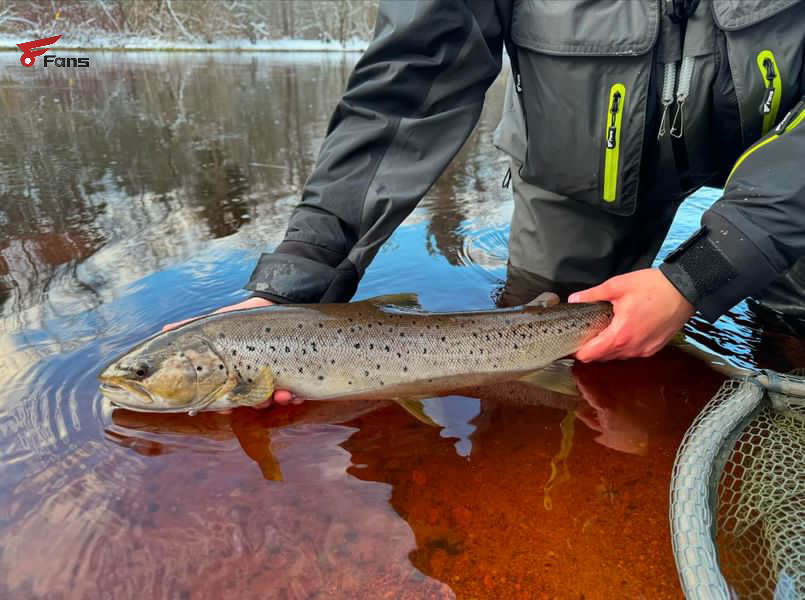
Fly Fishing for Trout vs. Fly Fishing for Bass: Key Similarities and Differences
Fly fishing is a beloved pastime enjoyed by anglers worldwide, offering a unique and immersive experience in nature. Two of the most popular targets for fly anglers are trout and bass, each presenting its own set of challenges and rewards. In this blog post, we'll explore the similarities and differences between fly fishing for trout and fly fishing for bass, providing insights to help anglers make the most of their time on the water.
- Habitat and Behavior: Trout and bass inhabit different aquatic environments, influencing the techniques and strategies used to catch them. Trout are typically found in cold, clear streams, rivers, and lakes with well-oxygenated water. They are known for their elusive nature and preference for insect prey, making stealth and presentation crucial for success. In contrast, bass are often found in warmer, more turbid waters, such as lakes, ponds, and slow-moving rivers. They are opportunistic feeders, preying on a variety of aquatic creatures, including fish, insects, and crustaceans.
- Fly Selection: Matching the hatch is a fundamental principle in fly fishing, regardless of the target species. However, the specific insects and forage items preferred by trout and bass can vary significantly. Trout tend to feed on aquatic insects like mayflies, caddisflies, and midges, requiring anglers to use imitative fly patterns that mimic these insects' appearance and behavior. Bass, on the other hand, have a more diverse diet and are less selective in their feeding habits. Anglers targeting bass often use larger, more attractor-style flies, such as streamers, poppers, and baitfish imitations, designed to elicit aggressive strikes.
- Presentation and Technique: Successful fly fishing for trout and bass often requires different approaches in terms of presentation and technique. Trout fishing typically involves delicate casts, precise drifts, and subtle presentations to fool wary fish in clear water conditions. Anglers may use techniques like dead drifting nymphs, dry fly fishing, or swinging wet flies to entice trout to strike. In contrast, bass fishing often involves more aggressive tactics, including casting larger flies into cover, stripping streamers, or working topwater poppers with lively retrieves to trigger aggressive strikes from opportunistic bass.
- Equipment and Gear: While many fly fishing techniques and principles apply universally, anglers may need to adapt their equipment and gear choices when targeting trout versus bass. For trout fishing, anglers typically use lighter weight fly rods (3-5 weight) with matching floating or sinking fly lines and tippets as fine as 6X or 7X for delicate presentations. Bass anglers, on the other hand, often opt for heavier fly rods (5-8 weight) with faster action and heavier fly lines to cast larger, bulkier flies and handle bigger fish in heavier cover.
Whether you're casting dry flies to rising trout on a mountain stream or enticing bass to strike a topwater popper on a calm lake, fly fishing offers endless opportunities for adventure and excitement. By understanding the key similarities and differences between fly fishing for trout and bass, anglers can hone their skills, refine their tactics, and enjoy success on the water, regardless of the target species. So, grab your fly rod, tie on your favorite fly pattern, and immerse yourself in the beauty of nature as you pursue your fly fishing dreams. And don't forget to check out the 8Fans fly fishing combo, equipped with everything you need to tackle trout or bass with confidence and style.
Happy fishing! ✨
https://www.8fans.com/product/8fans-fly-fishing-rod-and-reel-combos-9-00----3-4wt
https://www.8fans.com/product/8fans-breathable-3-layers-waist-waders
https://www.8fans.com/product/8fans-new-design-3-layer-ocean-camouflage-lightweight-waterproof-and-breathable-chest-waders
https://www.8fans.com/product/ultralight-non-slip-felt-sole-fishing-wading-boots
https://www.8fans.com/product/8-fans-breathable-2-layers-jackets

